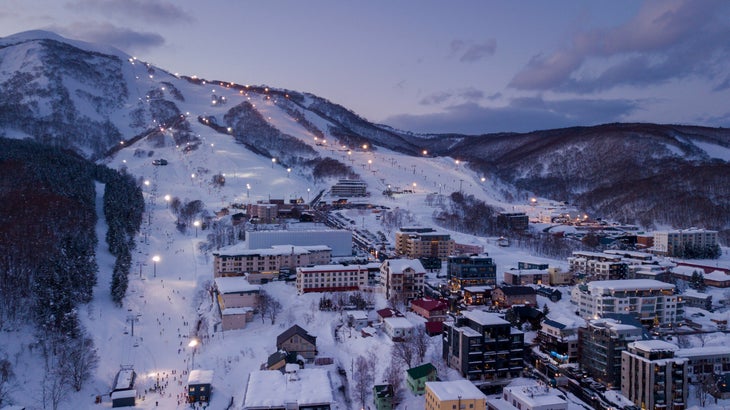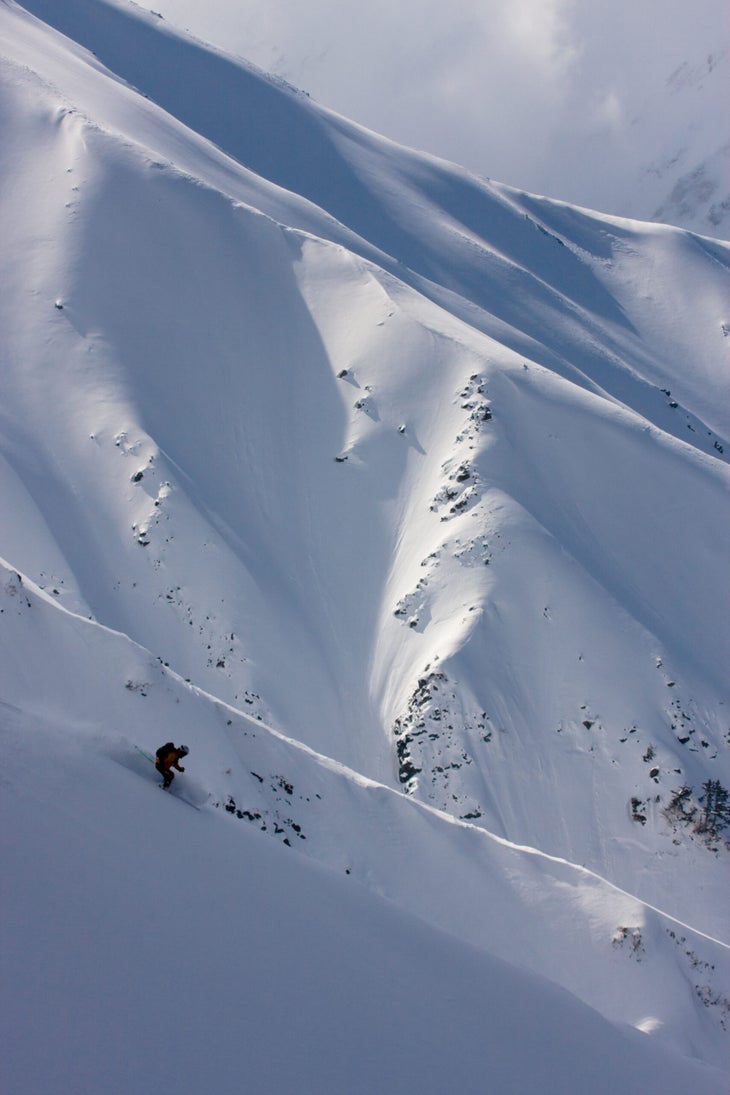Heading out the door? Read this article on the new Outside+ app available now on iOS devices for members! Download the app.
Let’s be honest: Japan has never been considered a “cheap” ski destination for Americans. Lift tickets may be more affordable than what we’re used to, but between flights, lodging, and your nightly bowl of ramen, you’re still looking at thousands of dollars per person.

But, things are starting to shift. The Japanese Yen has been having a tough year, falling to its lowest value since 1986 in July 2024. On July 8, 2024, The Week reported that the Yen-to-dollar ratio was 160-to-1, meaning you can buy 160 Yen worth of goods for $1 (for context 100 Yen is similar to a U.S. Dollar and there are even 100-Yen shops in Japan). For reference, between 2019 and 2021 the average ratio was under 110-to-1. As of writing, the ratio is 145-to-1.
That means the cost of lodging, train tickets, lift passes, and ski rentals in Japan are more affordable than they have been in a while. So if you’ve been contemplating that bucket-list trip to ski Japow, this might be the season to make it happen. Here’s how to book it right:
5 Japanese Ski Resorts To Consider This Season
Most Americans (and Australians and Chinese) head to one of the two major resorts in Japan: Niseko or Hakuba. The two are popular for good reason and are well worth a visit. However, here’s a little secret from someone who spent a winter living out of a van and skiing tiny Japanese resorts: There’s a lot more skiing than what you’ll find in Niseko and Hakuba, as Japan is home to over 500 ski areas. Some ski spots are tiny and potentially not worth a stop, but there are also a handful of lesser-known spots with plenty of terrain and great snow.
Also Read: I Took An All-Inclusive Trip to Japan, and It Was the Easiest Ski Vacation I’ll Ever Take
To that end, I’ve outlined a few ski areas that are off the tourist track along with the heavy hitters—because sometimes ski areas are popular for good reason.
Niseko
If you’ve heard of Japow, chances are people are talking about Niseko, which is located on Japan’s northernmost island of Hokkaido and sees double the amount of snow as most ski areas in the Rockies. The official snowfall count for Niseko is 49–59 feet, or 591–708 inches.

Niseko is made up of four interconnected ski areas: Annupuri, Niseko Village, Hirafu, and Hanazono. You can ski all four resorts on the Niseko United All-Mountain Pass, which starts at 7,400 Yen (or just over $50) for a single-day ticket.
However, reaching all that snow takes some added work. You can take an eight-hour-plus train journey to Niseko from Tokyo, but most skiers opt for the 1.5-hour flight to New Chitose Airport (CTS). From the airport, it’s four hours by bus and train or two hours by car to the resort.
Furano
Like Niseko, Furano Ski Resort is on the northern island of Hokkaido, home to the famed Japow, and is around four hours from New Chitose Airport by bus and train or two hours by car. However, unlike Niseko, which is a top pick for Westerners, Furano tends to be a bit quieter, with a more authentic, local feel. You’ll still find all the comforts of home but without the commercialized resort feeling.
Single-day tickets to ski Furano are around 7,000 Yen ($48).
Hakuba
The biggest draw of Hakuba is that it’s on the same island as Tokyo and can be easily reached via bullet train. It also has some of the best mountain views in Japan and lots of backcountry skiing.

Perhaps the biggest reason people choose Hakuba is that the valley is home to several ski areas. With one lift ticket, you get access to 10 ski areas, including Happo One, Tsugaike Kogen, Hakuba Goryu, Sun Alpina Sanosaka, and Cortina.
The price to ski the Hakuba Valley is around 9,700 Yen ($67) for a single-day ticket—all resorts included.
Minakami Kogen
Minakami Kogen Ski Resort is significantly quieter than the resorts in Hakuba Valley. However, like Hakuba, it is on the main island of Honshu and can be reached from Tokyo via a two-hour bullet train ride or a two-hour bus trip (or 3.5 hours by car).
The biggest draw of Minakami is the fact that lift tickets are just 4,800 Yen (that’s less than $35!), and the ski area is 12 minutes by car to Takaragawa Onsen Osenkaku, a series of open-air onsen (hot spring bathhouses) set around a river with traditional Japanese lodging and dining.
Nozawaonsen
Nozawaonsen is a favorite for many Westerners. It has great skiing, but the real draw is the fact that Nozawaonsen is a walkable, picturesque ski village with lots of great dining and 13 free onsens that you can visit after a ski day.
Nozawaonsen is around four hours by train and bus from Tokyo or a two-hour drive. Lift tickets are around 6,800 Yen ($47) for a single-day ticket, and the hot springs are free.
